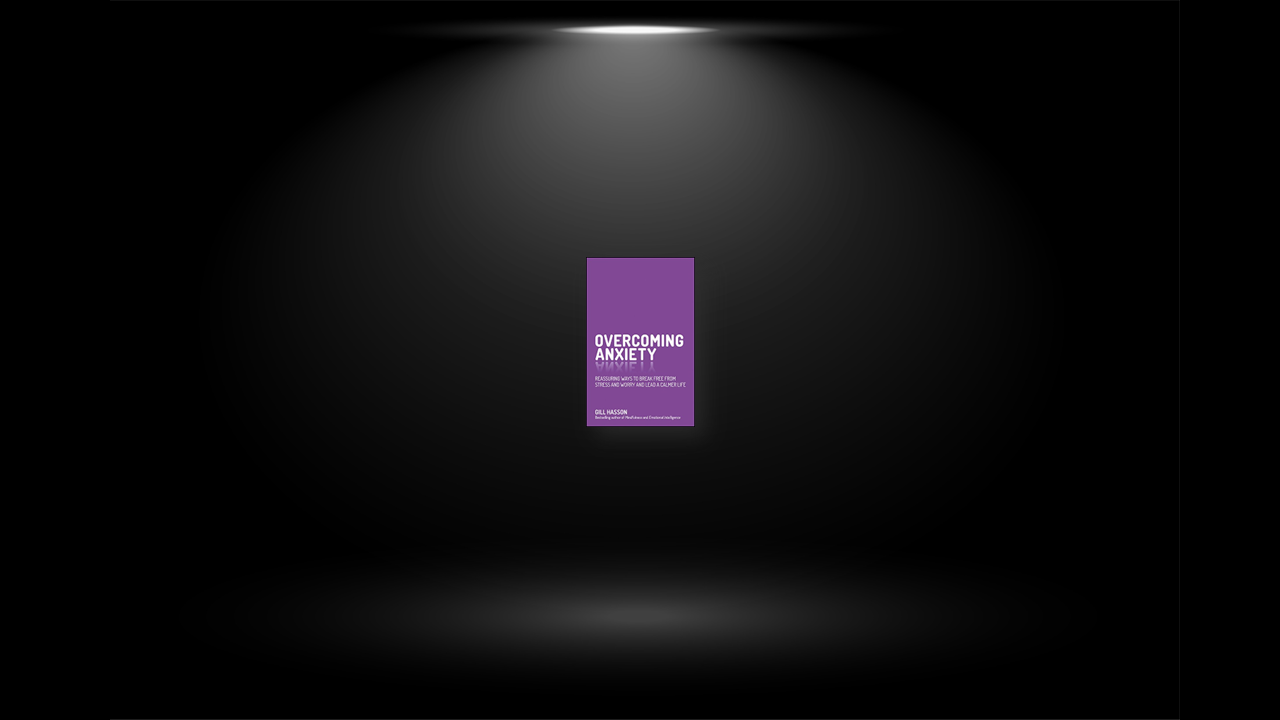The Three Aspects of Anxiety
Anxiety is the anticipation of trouble, misfortune or adversity, difficulties or disaster. Anxiety becomes a problem if, instead of prompting you to respond in a way that’s helpful, it overwhelms or paralyses you. There are three aspects to anxiety: physical feelings, thoughts and behaviour.
The physical aspects help your body to take action to protect you in a dangerous situation. But if there is no real physical threat, your body may feel tense and wired for quite a long time. The cognitive aspect of anxiety is your thoughts: the negative, distressing things you think and believe about what could or will happen. The behavioural part of anxiety is the things you do or don’t do when you’re anxious. The three different aspects of anxiety interact with each other: any one part can trigger or feed another, which means that anxiety can be self-sustaining.
Understanding Your Own Anxiety
Sometimes, the symptoms of anxiety are not obvious as being the result of anxiety. They may develop gradually and it can be hard to know when it’s become an anxiety disorder. Having generalized anxiety disorder (GAD) means that you feel anxious about a wide range of situations and issues over a long period rather than because of one specific event.
A panic attack is an exaggeration of your body’s normal response to fear, stress or excitement; you experience a rush of intense psychological and physical symptoms. Phobias may be specific and simple or they can be complex. Specific (simple) phobias are unreasonable or irrational fears over specific objects or situations whereas complex phobias involve a number of different, interrelated aspects.
Obsessive Compulsive Disorder (OCD) is an anxiety-related condition where a person experiences frequent intrusive, obsessive thoughts and compulsive behaviour. IBS is a common condition that can cause stomach cramps, bloating and diarrhoea. These symptoms may be caused by a physical condition but can also be symptoms of anxiety. Whatever the trigger, intensity or object of your anxiety, it can force changes on you that make it harder to cope with and manage. It is, though, treatable.
Understanding the Way You Think
Negative thoughts can be self-perpetuating, leaving no room for more positive, helpful ways of thinking. Regardless of whether your thoughts and actions are positive or negative, they become a habit, which means that any negative thinking patterns can become your normal way of thinking. As we grew up, we may have been discouraged from questioning and contradicting what we were told. This can mean that we suppress the instinct to question how logical, realistic or helpful our own thoughts are.
Your self-talk has a way of creating its own reality. Telling yourself you can do something can help it happen. Telling yourself you can’t do something can make that more likely to be true. Thinking in negative, unhelpful ways is also known as ‘cognitive distortion.’ There’s a range of ways in which cognitive distortions occur: jumping to a conclusion, catastrophizing, overgeneralization, mind reading and tunnel thinking.
Cognitive distortions are powerful because they can easily convince you that your thoughts are rational and true. But actually, they are limiting, unhelpful and even destructive.
To make sense of events and experiences, we each have an ‘explanatory style’ – our own way of thinking, interpreting and explaining events. The first step in managing negative self-talk is simply to be aware of it by writing it down. Once you are more aware of your negative self-talk, you can start to do something about it.
Changing the Way You Think
Your self-talk can be positive, kind, encouraging and empowering. You don’t need to try and ignore your negative thoughts or pretend you don’t have anxious thoughts. Rather, you identify and acknowledge the negative thinking and aim to replace it with more reasonable, helpful thoughts.
Neither negative nor positive ways of thinking are more ‘real’ or ‘true’ than the other. But what does make one way of thinking more real and true is simply the one you choose to say to yourself. Your positive thoughts need to feel believable to you, otherwise your mind will not accept them as real possibilities. Be more conscious – and conscientious – about the words you use; frame your thoughts in positive words and language.
Change requires you to let go of the old, established ways of doing things and be open to new ideas and approaches. You can help the process of changing the way you think by training your brain to adapt to change. If you do slip back to your old ways of thinking and behaving, keep the faith. Every time you do think positively, you’re more likely to think that way again.
There are ways you can train your brain to be more positive: notice the good things in your day, for example, or look for ways to connect with and help others. The more you train your brain to think positively, the more likely you’ll have helpful, positive thoughts and beliefs that will help you to manage and overcome anxiety. Visualize new possibilities – pictures where you are coping and managing and things turn out well. Instead of playing out the worst scenario in your mind, visualize the best outcome. Seeing yourself coping makes your brain believe that it is, indeed, possible.
Managing What You Do
Anxiety is not ‘all in your head’, it’s experienced throughout your body as well. You may or may not be aware that your anxious thoughts are related to your physical feelings or that physical symptoms are related to being anxious. Changing what you do may actually be easier or more practical for you than changing how and what you think.
People experience physical anxiety in different ways and they are all related to our ‘fight or flight’ response. If you persistently suffer from physical symptoms, it’s important to see a doctor to rule out unrelated physical problems. Your way of breathing has a direct influence on your physical symptoms. By managing your breathing you can reverse these symptoms.
When you’re anxious, the physical changes – rapid heartbeat, fast, shallow breathing and so on – all happen together, instantly. It takes longer, though, for your body to ‘come down.’
Trust your body’s ability to breathe. Know that whatever you do with your breathing, your body is always in control and always looks after your breathing for you.
Doing something physical can really help you manage the physical symptoms that have been triggered by your anxiety. Any physical activity – sport, exercise, housework, cleaning the car or gardening – that gets you up and moving can help. When you’re feeling worried or anxious, exercise can feel like the last thing you want to do. Get active your way. Do it at your own pace and ability.
Boosting Your Confidence, Courage and Assertiveness
When you are anxious, you’re more likely to believe that things will turn out badly. When you are confident, however, you’re more likely to believe that things will turn out well. Start from a position of strength; if you can identify an area of your life that’s important to you, that you enjoy and do well in, you are more likely to feel relatively good about yourself and your abilities.
Make yourself aware of what those important activities are, so that when you’re feeling agitated you can revert to them to help you feel grounded and connected. Identify something you’d like to be ‘better’ at and take small steps to achieve it. Build your confidence with courage: do what’s important to you despite your anxiety and fear. Focus on what it is you want to achieve.
Next time you want to overcome your anxiety in a particular situation, remember a time in the past when you overcame something you were anxious about. Tap into that courage again. Small changes in how you use your body can add up to a big change in how you feel. Learning how to handle difficult situations and to assert yourself can make you feel more confident and, therefore, less anxious and worried. Be clear about what you do or don’t want and how far you’re prepared to negotiate and compromise.
Finding Help and Support from Others
Voicing your worries can take away a lot of their scariness. If you can’t talk to a partner, friend or family member, your doctor, a counsellor or a support group may help. You need positive people – ‘radiators’ – in your life; people who are more likely to respond to you in a positive way.
Spend less time around people in your life who are ‘drains’ – those who take away your energy and resources, and where their negativity can increase your anxiety. Read about people who have coped with difficult times in their lives. Their stories can inspire you and help you to think along positive lines.
Helping others frees you from focusing on yourself, which, in turn, can get you into a cycle of positive thinking and behaviour. It’s important not to dismiss or make fun of a person’s anxiety or push them into situations that are too much for them. Being supportive means that you try and understand and accept how the anxious person is feeling while at the same time avoiding getting caught up in, accommodating and giving in to their anxiety.
Set some limits. Negotiate and compromise. Encourage the anxious person to overcome small challenges. In this way, they can build up their confidence and feel more in control. As well as listening and talking with them and helping them overcome small challenges, find some interesting, relaxing and/or fun things to do together.


